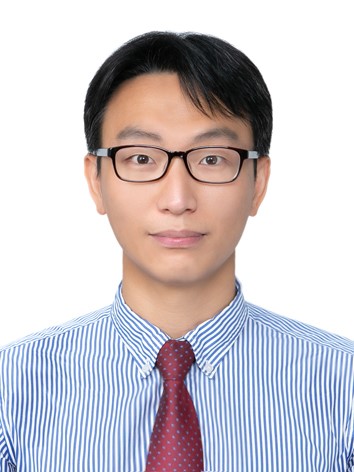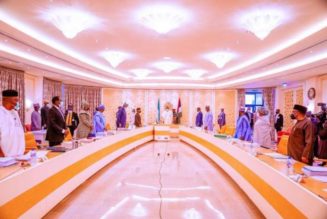Amid the global population aging, defining the period of elderhood has been sparking debates everywhere. One of the most significant controversies regarding this matter is taking place in France, where massive protests have erupted surrounding a bill proposing to raise the retirement age from 62 to 64. In South Korea, various welfare programs such as basic pensions, long-term care insurance for older adults, and free public transportation for the elderly are provided based on the age of 65. Hence, even mentioning the need to adjust the age for elderhood due to changes in the social structure is considered taboo, as the issue is deemed extremely sensitive in modern Korea. Since 1981, the most common arguments against adjusting the fixed cutoff age include Korea’s elderly poverty rate being the highest in the OECD and the fact that the increase in life expectancy is not accompanied by an increase in healthy life expectancy, resulting in longer periods of illness in old age.
Many people tend to use Statistics Korea’s “life expectancy without morbidity” trend to highlight the lack of improvement in healthy life expectancy among Koreans. However, one issue with this measure is that it can make healthy life expectancy seem shorter. This is because chronic diseases like hypertension, diabetes, and hyperlipidemia are being quickly detected and managed through medical interventions. Under this measure, taking medication for chronic diseases is considered unhealthy.
In fact, according to the “life expectancy without morbidity” method, the healthy life expectancy for Koreans decreased from 65.7 years in 2012 to 64.4 years in 2018, but it slightly increased again to 66.3 years in 2020. For reference, life expectancies in 2012, 2018, and 2020 were 80.9 years, 82.7 years, and 83.5 years, respectively. However, It would be unfair to consider individuals who maintain an active daily life while appropriately managing chronic diseases like hypertension or diabetes with medication as having reached the end of their healthy life expectancy.
Let’s take an example of a patient receiving treatment at my geriatric clinic: A 90-year-old man, suffers from over 10 chronic diseases, including chronic obstructive pulmonary disease, peripheral vascular disease, chronic kidney disease, and hypertension. The patient takes seven types of medications. Even though he has visited multiple hospitals for various diseases, he continues to engage in regular exercise and is able to independently manage all of his daily tasks, including hospital visits. His walking speed and muscle strength are not much different from those of young adults. He is actually healthy but is considered unhealthy by the “life expectancy without morbidity” measure.
The international standard for calculating healthy life expectancy is the World Health Organization’s (WHO) concept of “health-adjusted life expectancy (HALE).” Using various adjustment formulas to estimate the point when daily activities are hindered due to disease or accidents, this method avoids the unfairness of classifying people with mild chronic diseases as unhealthy. Over the past 20 years, Koreans’ life expectancy has increased by 7.3 years, and the healthy life expectancy calculated using this method has increased by 5.7 years. This result is seen as a nice feat. In 2019, with HALE at 73.1 years, Korea ranked third among countries with WHO data, following Japan (74.1 years) and Singapore (73.6 years). Compared with other affluent countries such as the United States (66.1 years), the United Kingdom (70.1 years), Germany (70.9 years), and France (72.1 years), it becomes evident how healthily Koreans are aging.
Geriatric physicians are trained to assess a person’s old age based on actual functioning rather than numerical age. If the patient suffers from more diseases and takes more medications, finding it difficult to perform daily activities such as walking and bathing, the patient is considered to be frail. When faced with stressful situations such as contracting Covid-19 or being hospitalized for treatment, the patient’s level of frailty, rather than chronological age, can determine the likelihood of death or the need for nursing home admission due to functional decline.
According to an analysis of data from the Korea National Health and Nutrition Examination Survey by Professor Kang Min-gu of the Department of Internal Medicine at Chonnam National University Hospital, the age at which the same level of frailty (frailty index 0.2) is reached is also increasing. In 2010, it was 71.3 years, and in 2019, it was 75.0 years, closely following the WHO’s HALE. An individual with a frailty index of 0.2 is in a state where aging and chronic diseases are somewhat overlapping. They may experience a slowing of walking speed, a slight curvature of the back, and a decrease in muscle mass, which could lead to the use of a cane for walking. It is often referred to as the “pre-frailty stage” and can be considered the “body of old age” as commonly thought. This is a crucial time to pay special attention to muscle and cognitive health, as doing so can help prevent the progression of frailty.
How do Koreans view old age? In a 2022 survey of the elderly in Seoul involving 3,010 respondents born before 1957, the average self-perceived standard age for the elderly was 72.6 years. In the Ministry of Health and Welfare’s 2020 survey of the elderly, more than half (52.7 percent) considered the elderly standard age to be between 70 and 74. The actual retirement age in Korea was 72.3 years in 2018 (OECD), which can also be seen as reflecting the transition from adulthood to old age in terms of physical and cognitive abilities. This average value is the collective wisdom of many people observing when individuals begin to show the “body of old age” commonly thought of based on their experiences. Interestingly, the results are similar to the WHO’s HALE and Professor Kang Min-gu’s analysis of the Korea National Health and Nutrition Examination Survey.
Koreans’ elderhood is getting healthier. This is good news. It stands in contrast to the traditional notion of elderhood as a long-ailing period. Unfortunately, many articles spread fear by showing unfavorable calculation methods, implying that the impoverished and sick old age period continuously increases. Statistical data and expert opinions expressing concerns about the future of Korea, with skyrocketing medical and welfare costs, fill newspaper pages every day. However, as Hans Rosling, the author of “Factfulness,” points out, looking at the actual data shows that the world we live in is improving more than we perceive. We are enjoying a longer youth.

Jung Hee-won, a geriatric physician at Asan Medical Center, graduated from Seoul National University College of Medicine and trained at Seoul National University Hospital. During his med-school days, while practicing the horn, he realized the importance of muscle maintenance and became interested in sarcopenia. His main research interests include frailty, sarcopenia and establishing age-friendly health systems for acute hospitals. This column was originally published in Chosun Ilbo in Korean on April 26. –Ed.
![[Column] Healthy life expectancy at 73.1 years: Korean elderhood is getting healthier - KBR](https://www.wazupnaija.com/wp-content/uploads/2023/05/column-healthy-life-expectancy-at-73-1-years-korean-elderhood-is-getting-healthier-kbr-1050x600.jpg)








